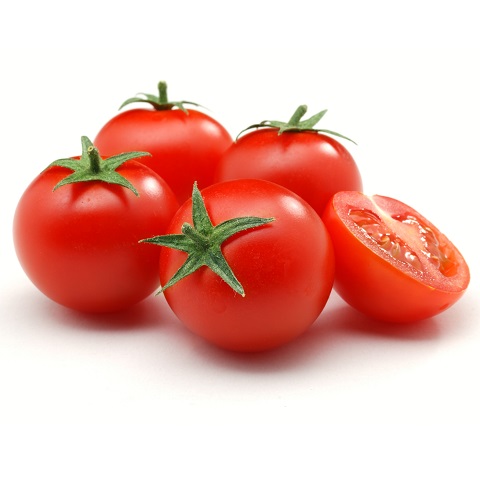- Home
- Crop Knowledge
- Vegetables
- Tomato
Tomato
- Nutrients
- Common Pests
- Crop Selection
- Documents
|
Crop Stage Images |
 |
 |
 |
 |
|
|---|---|---|---|---|---|
| Crop Stage | Transplanting to Plant Establishment stage | Flower Initiation to Flowering Stage | Flowering to Fruit Set | Alternate Day From Picking | |
| Duration (in days) |
10 | 30 | 30 | 80 | |
|
Nutrients (Kg/ha) |
N | 19.99 | 79.93 | 59.94 | 39.96 |
| P | 12.50 | 25 | 12.50 | 12.50 | |
| K | 25 | 100 | 75 | 50 | |
Deficiency of Nutrients:
| Nutrients | Nitrogen (N) | Phosphorus (P) | Potassium (K) |
|---|---|---|---|
| Nutrients Deficiency | 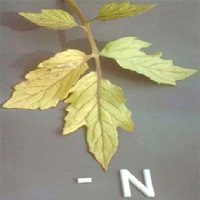 |
 |
 |
| Deficiency Symptoms |
1. Nitrogen deficient tomato plants grow slowly. 2. Leaves are small and light green to yellowish green to pale yellow. 3. Leaves near the top will be yellow-green with purple veins. 4. Stems are thick and hard. Flower buds turn yellow and drop off. 5. Fruits may be small and pale green before ripening. Yields are reduced. 6. Nitrogen deficiency of the nutrient can be corrected by applying nitrogenous fertilizers based on soil test. |
1. Maturity is delayed. 2. Plants deficient in phosphorus grow slowly. 3. Seedlings are stunted, especially during cool weather. 4. Leaves become dark green with purple interveinal tissue on the underside of the leaf. 5. Stems become slender, fibrous and hard. 6. The deficiency can be corrected by applying phosphatic fertilizers based on soil tests. |
1. The deficient young tomato plants have dark green leaves with small stems and shortened internodes. 2. Plant tips have a spike like an appearance resulting from the slower development of the leaf petioles. 3. Young leaves are dark green, becoming crinkled and curled. Older leaves are chlorotic and bronzed. 4. Leaf margins become brown, and tissues break down between the veins. 5. Fruits of deficient plants are not fleshy, ripen unevenly and appear blotchy and drop off soon after repining. 6. The deficiency can be corrected by applying potassium fertilizers, based on soil tests. |
| Nutrients | Magnesium (Mg) | Iron (Fe) | Zinc (Zn) |
|---|---|---|---|
| Nutrients Deficiency |  |
 |
 |
| Deficiency Symptoms |
1. Magnesium deficiency is first evident on lower and older leaves. 2. Leaf veins remain dark green, and areas between the veins become yellow. 3. Nitrogen deficiency intensifies the development of Mg deficiency in low Mg soils. 4. The deficiency can be corrected by spraying 0.5 per cent magnesium sulphate twice at weakly intervals. |
1. Young leaves are chlorotic in iron-deficient plants. 2. Pale yellow mottling starts at the base of the leaves and spreads upward along the midrib and outward along the veins. 3. Iron deficiency is often related to soils with high pH, free CaCO3, high phosphorous and poor aeration. 4. Its deficiency can be corrected by spraying 0.25 per cent ferrous sulphate or 0.5 per cent annabhedi till the chlorotic symptoms do not appear on young leaves. |
1. Young leaves of zinc-deficient plants are small with yellow interveinal mottling.
2. Necrotic interveinal areas occur in expanded and older leaves. 3. Spraying 0.25 per cent Zinc sulphate twice at weekly intervals corrects Zinc deficiency and for prevention soil application of zinc sulphate @ 50 kg/ha is recommended. 4. Single morphactin treatment significantly checked the abscission and shedding of flowers thereby increasing the number of fruits per plant. 5. The number of fruits was maximum when treated with GA3 followed by control and morphactin-treated plants. Also, comparatively higher values of pyruvic acid and glyoxylic acid were recorded with GA3 treatments. |
| Images Of Pest Life Cycle: |  |
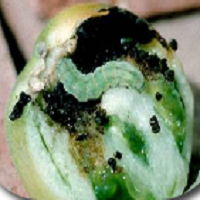 |
 |
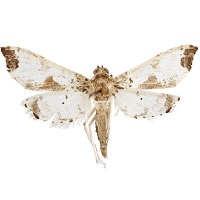 |
|---|---|---|---|---|
| Stages: | Egg | Larvae | Pupae | Adult |
| Mark Of Identification: | Eggs are sculptured and creamy white in colour, laid singly. | Shows colour variation from greenish to brown. It has dark brown-grey lines on the body with lateral white lines and also has a dark band. | Brown in colour, occurs in soil, leaf, pod and crop debris. | Female: Light pale brownish yellow stout moth.
Male: Pale greenish moth V-shaped speck. |
| Life Cycle: | 4-11 Days. | 15-20 Days. | 6-10 Days in soil. | 2-4 Weeks. |
Management (Pest Control):
| Chemical: | Installation of pheromone traps can minimizes population of male moth. |
|---|---|
| Organic: | Spray G Agro Beau 5gm/lit + G Agro Meta 5ml/lit 2 to 3 spray at 21 days interval. |
| Images Of Pest Life Cycle: |  |
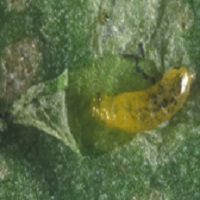 |
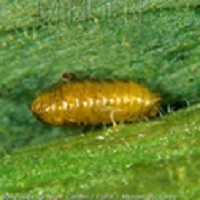 |
 |
|---|---|---|---|---|
| Stages: | Egg | Larvae | Nymphs | Adult |
| Mark Of Identification: | Egg are yellow and small. | Minute orange yellowish apodous maggots. | Yellowish brown pupates within mines. | Pale yellow in colour dark colour. |
| Life Cycle: | 4-5 Days. | 6-5 Days. | 12 Days. | 3-4 Weeks. |
Management (Pest Control):
| Chemical: | Monitoring the presence of flies by yellow sticky traps & spray crop with insecticide. |
|---|---|
| Organic: | Spray G Agro Beau 5gm/lit + G Agro Meta 5ml/lit 2 to 3 spray at 21 days interval. |
| Images Of Pest Life Cycle: |  |
 |
 |
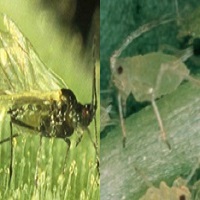 |
|---|---|---|---|---|
| Stages: | Egg | Larvae | Nymphs | Adult |
| Mark Of Identification: | Tiny egg laid among aphids on leaves. | Winged form of an adult green peach aphid. | Greenish colour. | Soft-bodied insects (order Homoptera) that are about the size of a pinhead. |
| Life Cycle: | 2 – 3 Days. | 20-25 Days. | 14 Days. | 10 Days. |
Management (Pest Control):
| Chemical: | Spray dimethoate 0.03% or methyl demeton 0.025. |
|---|---|
| Organic: | Spray G Agro Microfeed L 5ml/lit 2 to 3 spray at 21 days interval. |
| Images Of Pest Life Cycle: | 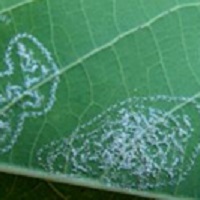 |
 |
 |
 |
|---|---|---|---|---|
| Stages: | Egg | Larvae | Pupae | Adult |
| Mark Of Identification: | Pear shaped, light yellowish, stalked. | Yellow coloured. | On hatching – Oval, scale-like, greenish white. | White, tiny, scale-like adults |
| Life Cycle: | 5-10 Days. | 4 Days. | 3-4 Days. | 25 Days. |
Management (Pest Control):
| Chemical: | Spray the crop with 0.1% methyl dematon or phosphamidon or monocrotophos or dimethoate or 0.05% fenpropathrin as soon as incidence is noticed. |
|---|---|
| Organic: | Spray G Agro Beau 5gm/lit + G Agro Microfeed L 5ml/lit 2 to 3 spray at 21 days interval. |
| Images Of Pest Life Cycle: | 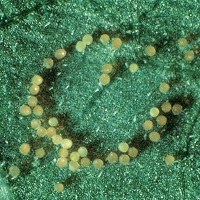 |
 |
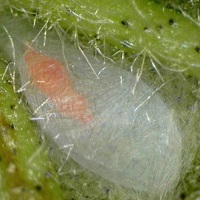 |
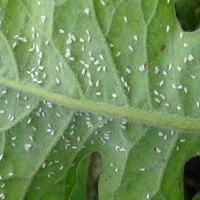 |
|---|---|---|---|---|
| Stages: | Egg | Larvae | Nymphs | Adult |
| Mark Of Identification: | Small light green colour. | Yellow white coloured. | Very minute, slender, yellowish and microscopic. | Small, slender, yellowish to brown with fringed wings and drift away on disturbance. |
| Life Cycle: | 1-4 Days. | 1-6 Days. | 4-6 Days. | 30-45 Days. |
Management (Pest Control):
| Chemical: | Spraying the crop with 0.02 % phosphamidon or 0.025 % methyl demeton or 0.03 % dimethoate at 10 days interval as per needed. |
|---|---|
| Organic: | Spray G Agro Microfeed L 5gm/lit + G Agro Meta 5ml/lit 2 to 3 spray at 21 days interval. |
| Seed Variety | Characteristics | Crop Duration (Days) |
Crop Yield (qtl/acre) |
|---|---|---|---|
| Punjab Ratta | This variety is suitable for processing. | 150 | 225 |
| Punjab Chhuhara | 1. Fruits are seedless, pear shape, red and firm with thick wall or skin. 2. Marketable quality remains for 7 days after harvesting and thus suitable for long distance transportation and processing. |
135-140 | 325 |
| Punjab Tropic | 1. Plant height is about 100 cm. 2. Fruits are of large size and round shape, they bore in a cluster. |
141 | 90-95 |
| Punjab Upma | 1. Suitable for cultivation in a rainy season. 2. Fruits are oval in shape, medium size and of firm deep red colour. |
130 | 220 |
| Suvarna Sampada Hybrid | It is resistant to bacterial wilt and early blight. | 140-145 | 400-420 |
| Punjab NR-7 | 1. A dwarf variety having medium size juicy fruits. 2. It is highly resistant to fusarium wilt and root-knot nematodes. |
120 | 175-180 |
| Punjab Red Cherry | 1. These cherry tomatoes are used in salads. 2. These are of deep red colour and in future, it will be available in yellow, orange and pink colour. |
130 | 150 |
| Punjab Varkha Bahar 2 | It is resistant to leaf curl virus. | 130 | 215 |

